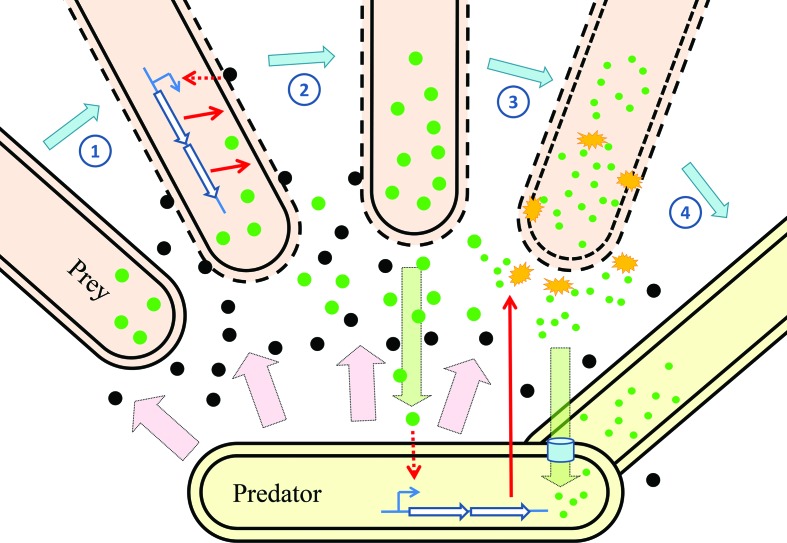Fig. 5.
A model of transcriptional changes during predation of E. coli by M. xanthus. From left to right: prey cells close to the predator encounter its secretions such as OMVs (black circles). The predatory secretions attack the surface of the prey cell inducing changes in gene expression as the prey resist attack (1). Damage to the prey releases material (green circles) into the commons (2), which is sensed by the predator. The predator induces expression of genes for biomass assimilation, including hydrolases (yellow starbursts) which break down prey-derived material (3) for uptake by the predator (4). Pink arrows indicate constitutive secretion by the predator, green arrows denote the flow of prey-derived material, blue open arrows represent genes, while red arrows indicate the induction of gene expression and transport of gene products.

